  |
 Jan 18, 2011 - 9:57 AM Jan 18, 2011 - 9:57 AM
|
|
|
Enthusiast Joined Jan 16, '10 From Sydney, Australia Currently Offline Reputation: 0 (0%) |
G'day 6gc'ers I need painting advice!
My 6gc has an extremely deep 30cm (12") gouge in the rear fender <insert embarrassing story with flimsy excuses here>. Now I'd like to try my hand at repairing it myself, however I've never done anything like this before so Im after some advice before I ruin it even more. The area around the scratch has been repainted twice before, once by the previous owner and once professionally after a nasty vandalism incident which can be seen here. As a result the paint around the scratch is extremely thick, about 2mm from the surface of the surrounding paint to the steel underneath and another 1mm into the steel. After doing some reading on the subject I've come up with the following plan. 1. Wet sand the area with 100-grit down to bare metal. 2. Fill the gouged steel with bondo. 3. Sand progressively finer 200 - 400 - 800 grit. 4. Apply primer. 5. Apply paint + wet sand with 1000 grit. 6. Repeat step 5 untill new paint is level with surrounding paint. 7. Apply clear coat, wet sand with 2000 grit, buff and polish. 8. Enjoy the satisfaction of having robbed a body-shop of their exorbitant fee. I know colour matched paint can be purchased in spray cans from auto-shops, will these be suitable for this application, or will a full spray-gun set up be required? Does this little plan sound right to those with painting experience? Feel free to laugh at my noob-ness and point me in right direction if I'm way off the mark. Many thanks, Palmy. This post has been edited by Palmy: Jan 18, 2011 - 9:58 AM |
 Jan 18, 2011 - 11:50 AM Jan 18, 2011 - 11:50 AM
|
|
|
Enthusiast  Joined Aug 15, '10 From UK Currently Offline Reputation: 0 (0%) |
To give you an idea visually...search on YouTube for a guy called "Jimmo4life...he has done a great video with info subtitles of doing such a repair.
You can use rattle cans for small jobs like this...the secret to paint colour matching is blending the new paint into the existing old paint. This will help hide the repair edges. For the filler (bondo)...after applied start sanding with 80grit, then 120grit up to 240grit. Don't go much finer otherwise the primer will not have a "key" to grip onto. Sand primer using a "guide coat"...this will ensure your primer doesn't have any pin holes you may have missed. Start using 320grit and work up to 500grit. Apply paint...do not sand between layers otherwise you will see the scratches after clear coating. You can use a "tack rag" to help remove any bits. Apply clear coat...wet sand with 2000grit, 2500grit and buff out. Don't press too hard here otherwise you will put deep scratches into clear. Just make sure you use a quality clear coat otherwise you will have future shrinking, delamination, etc. Give me a few mins and I will put up some pics of the process I went through when fixing a scratch on my Wifeys car. This post has been edited by CelicaHD2: Jan 18, 2011 - 12:28 PM |
 Jan 18, 2011 - 12:23 PM Jan 18, 2011 - 12:23 PM
|
|
|
Enthusiast  Joined Aug 15, '10 From UK Currently Offline Reputation: 0 (0%) |
1. Using 80 Grit sandpaper and feather surrounding area ready for body filler.
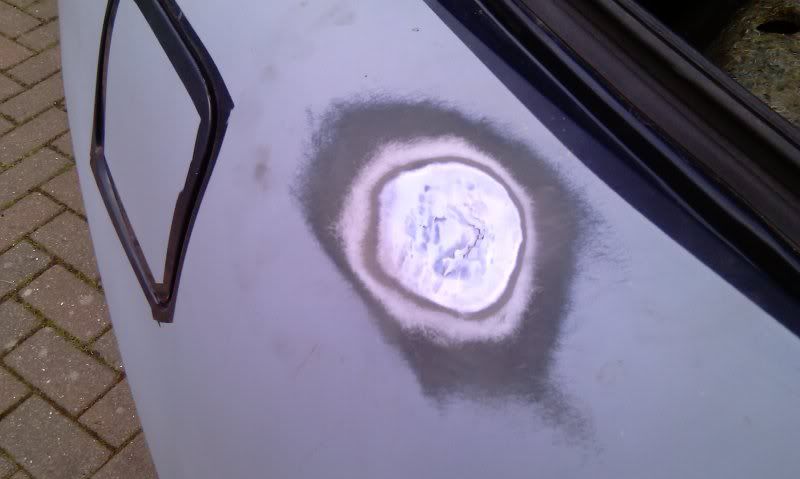 2. Body filler applied over total repair area, following body contour, ready to be sanded smooth.  3. Starting with 80 Grit sandpaper then 120 Grit sandpaper...start shaping the body filler. 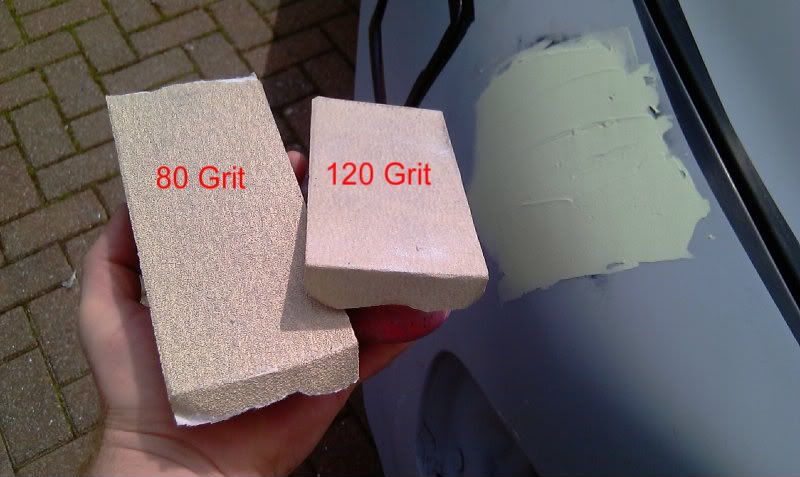 4. Once the edges of body filler start to go milky...stop. Another layer of body filler required to fill in area in centre. 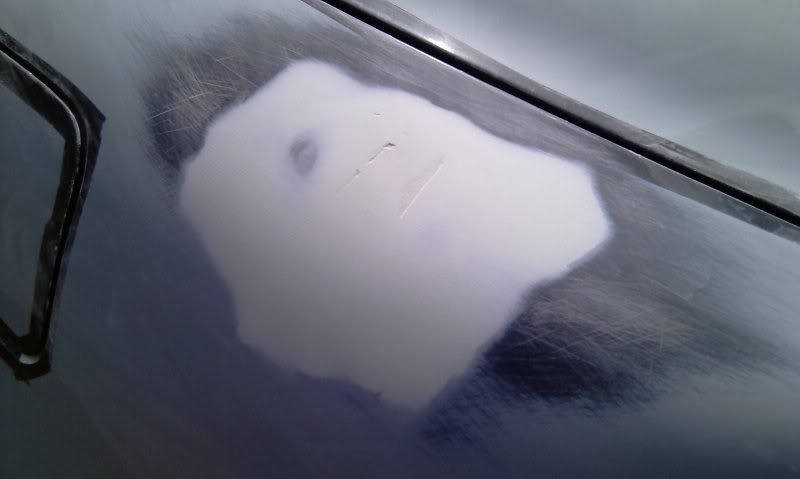 5. The second layer of body filler to fill in lower areas in original repair area. 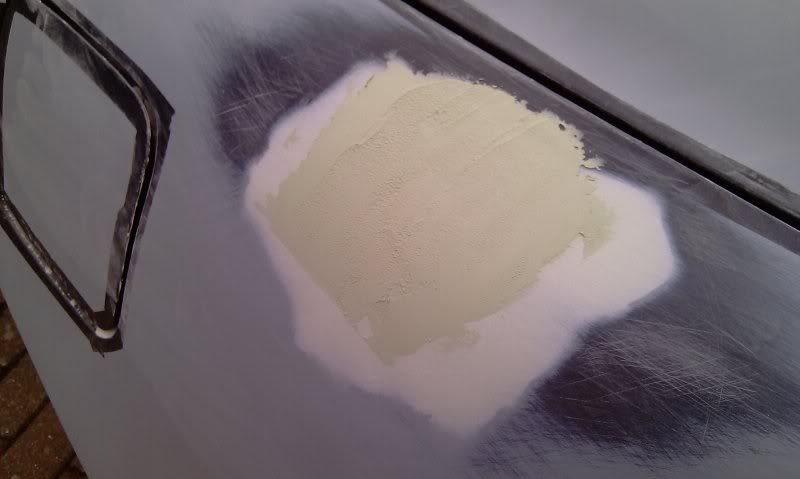 6. Sanded down with 80 Grit then 120 Grit sandpaper until edges start turning milky. 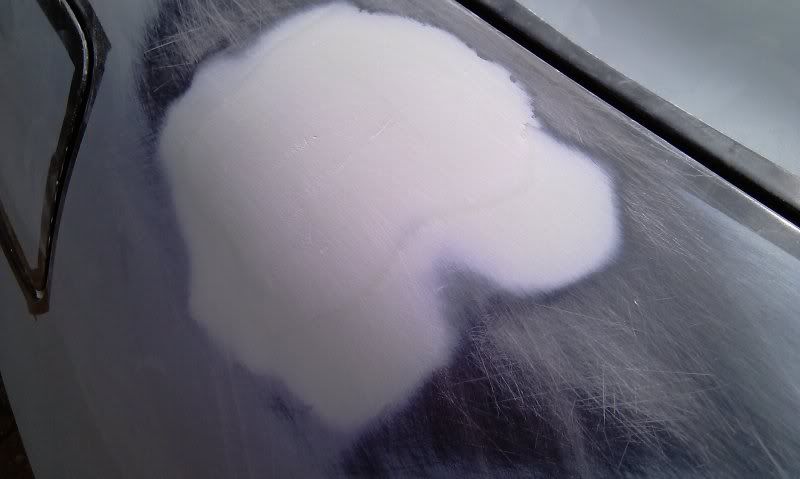 7. Stopper filler apllied over pin hole area. 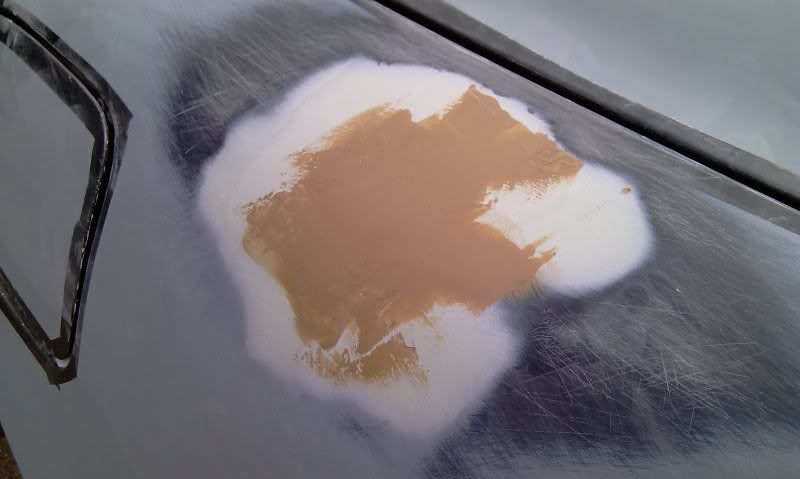 8. Sanded with 220 Grit sandpaper for perfect pin hole finish. 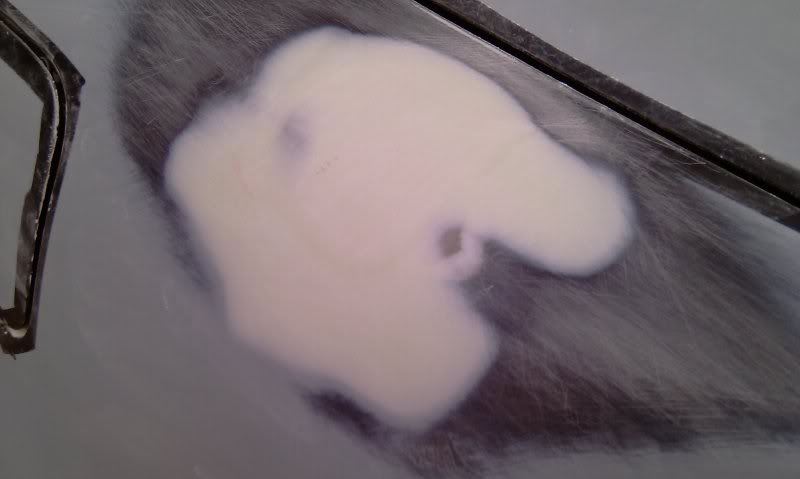 9. Using 320 Grit sandpaper to feather out the edges of the repair area into surrounding. 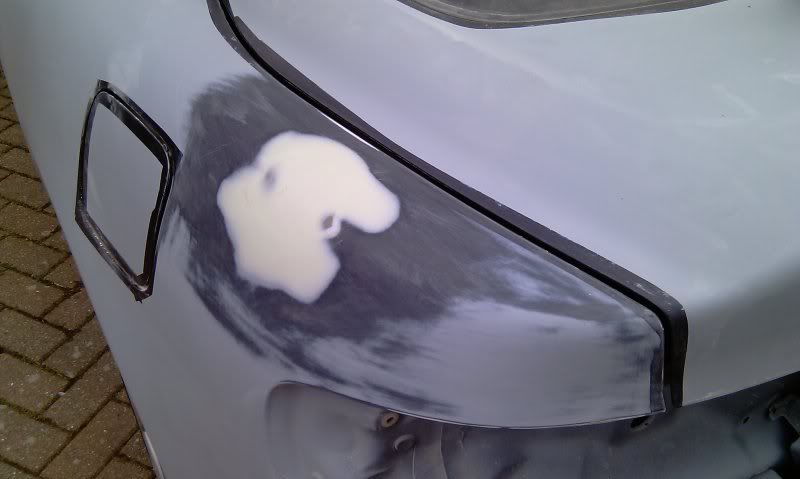 10. Various masking technique used to reduce overspray of primer. 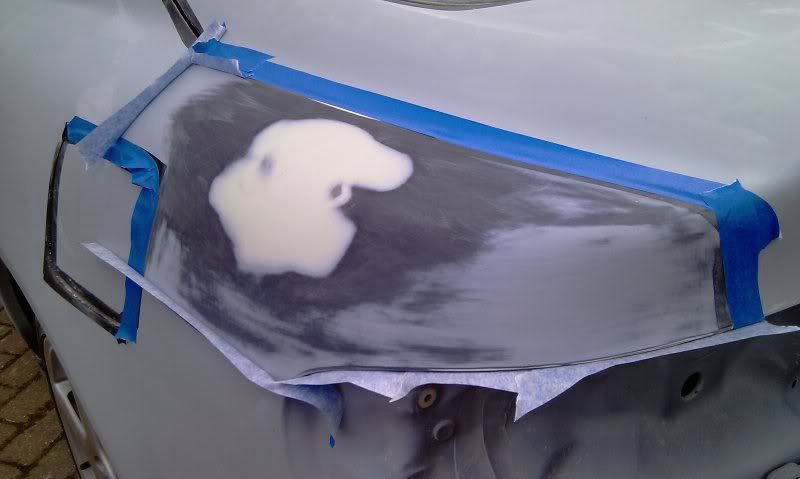 11. After 1st coat of primer...you can just about see the repair...allow 10 mins inbetween coats for solvents to flash off. 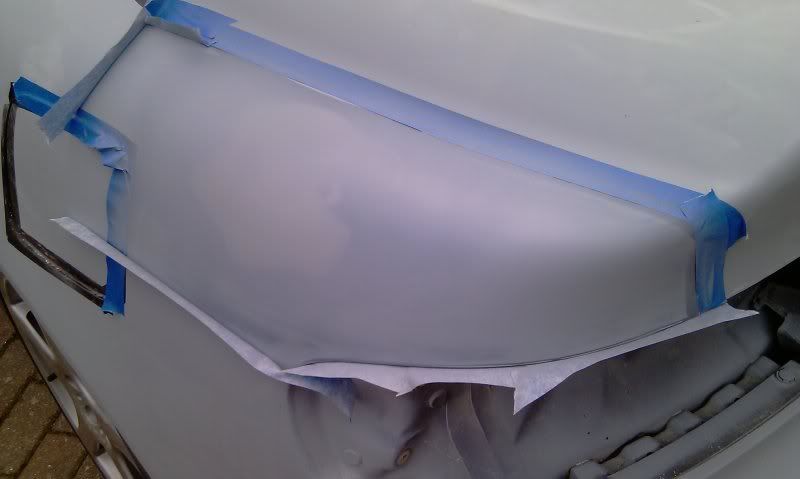 12. After 3 coats of primer...the repair area is finished. 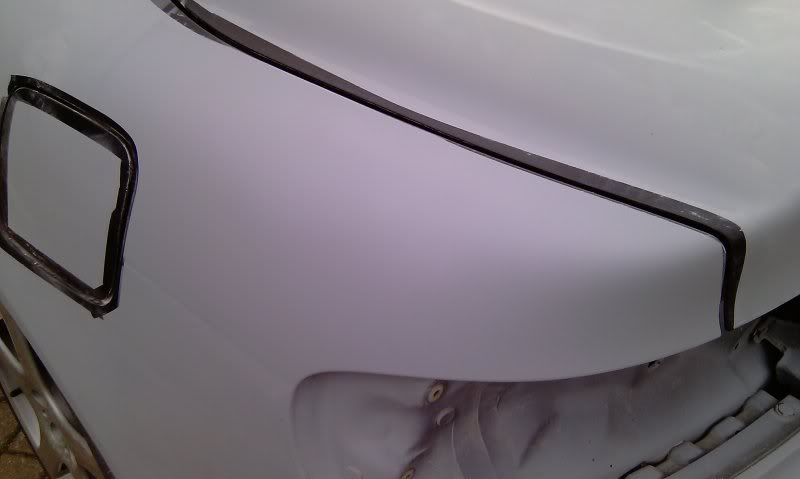
This post has been edited by CelicaHD2: Jan 18, 2011 - 12:29 PM |
 Jan 18, 2011 - 12:35 PM Jan 18, 2011 - 12:35 PM
|
|
|
Enthusiast  Joined Aug 15, '10 From UK Currently Offline Reputation: 0 (0%) |
It's usually best to leave it a couple of days for the primer to cure fully...plus any shrinking etc has completed.
Onto Primer sanding Stage: 1. Apply guide coat over primer.  2. Using 320grit sand in an x-pattern...this will help you follow body contours and shows up any low spots. 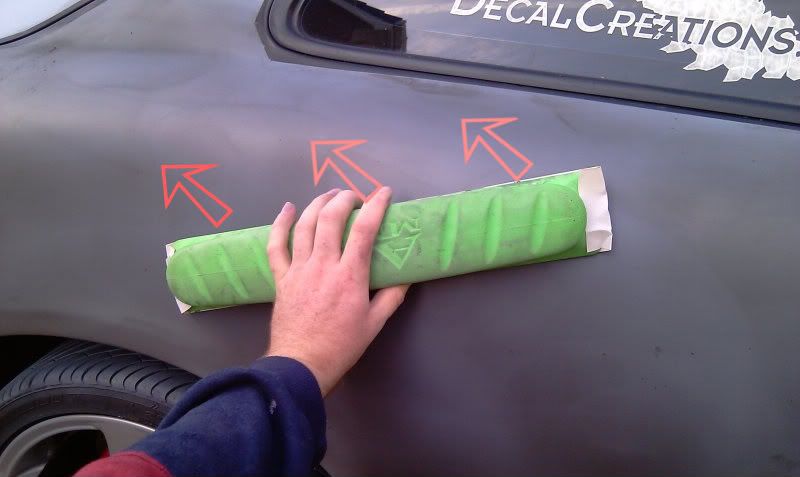 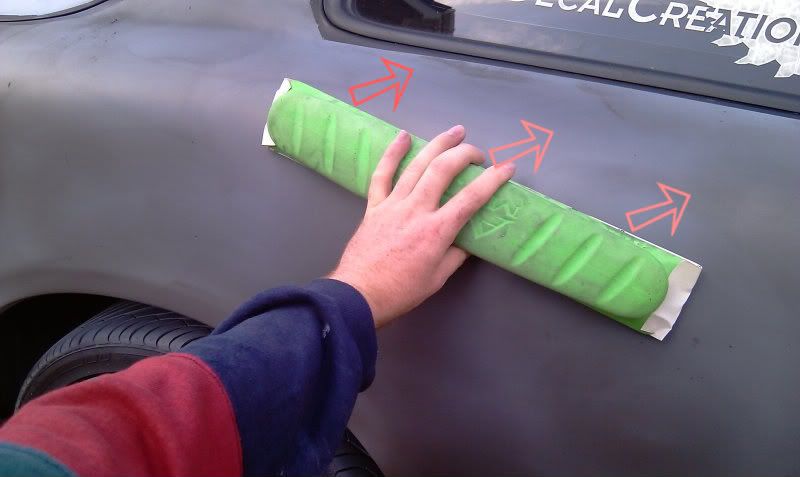 3. Here you can see the use of guide coat has highlighted a low spot which would have ruined the final paint. If this happens, you may need to put another layer of fine filler or stopper and re-prime the spot. 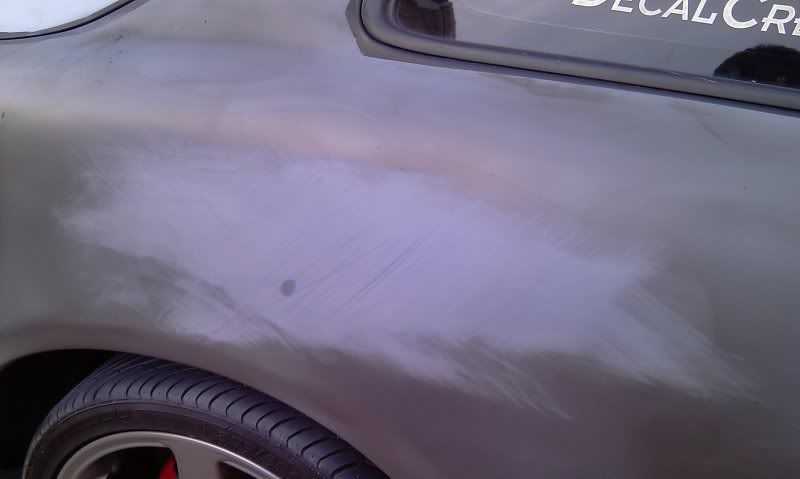 |
 Jan 18, 2011 - 12:50 PM Jan 18, 2011 - 12:50 PM
|
|
|
Enthusiast  Joined Aug 15, '10 From UK Currently Offline Reputation: 0 (0%) |
Next step is the painting and blending process...excuse using different car but the process is the same:
1. Mask off panel and surrounding area of car...otherwise the rest of the car will fell like sandpaper if overspray lands on paint. 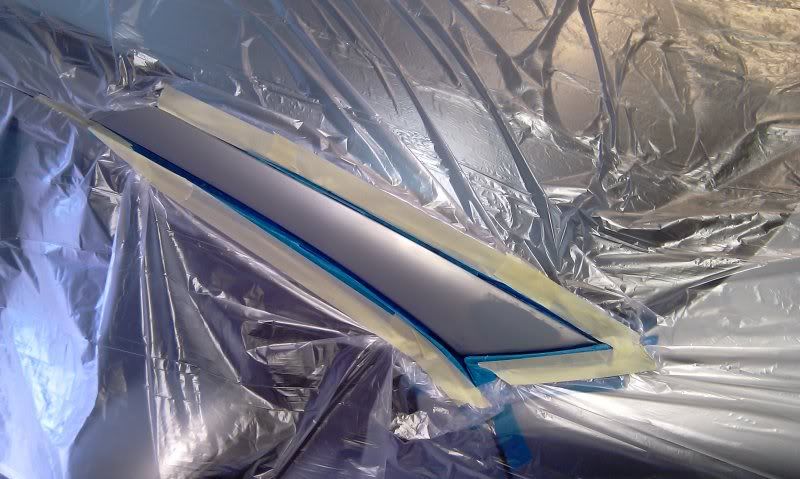 2. After 3 light coats of light metallic silver...each one blended further up the panel than the previous. 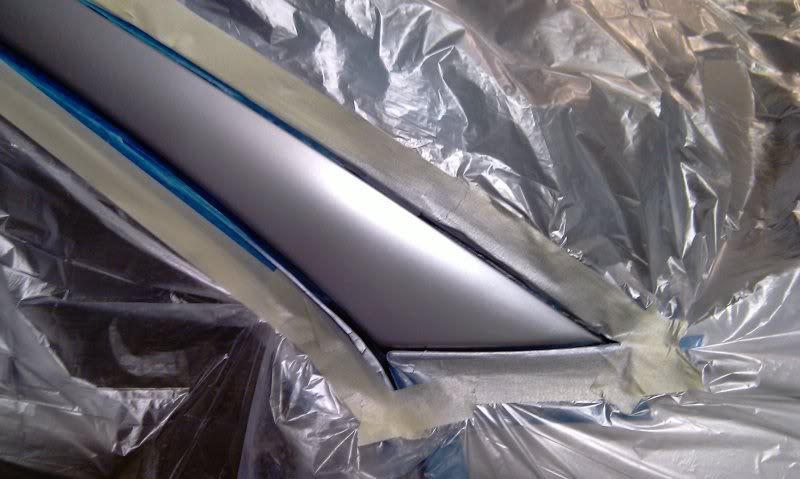 3. After base layer has flashed off...so all solvents have evaporated...1st layer of clear coat just at base of repair. 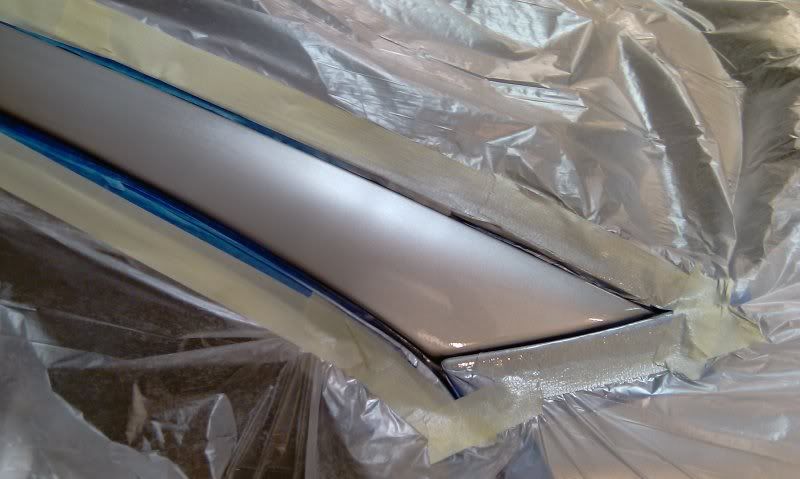 4. 2nd layer of clear coat...starting from bottom but slightly further up panel than the 1st layer. 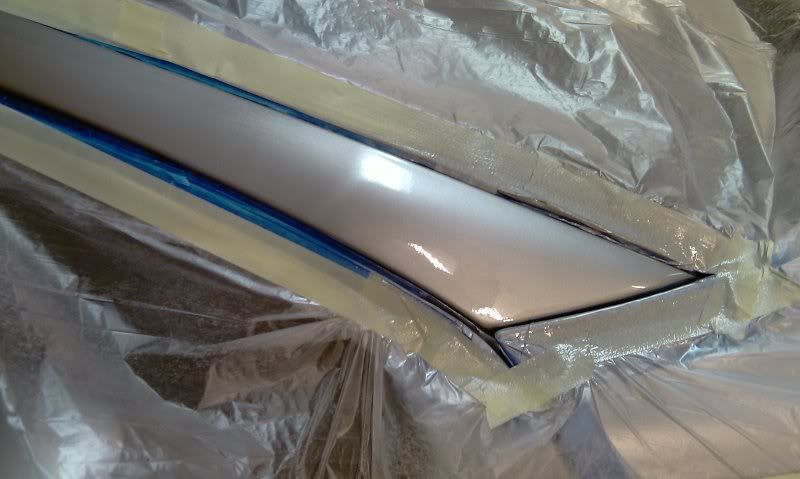 5. 3rd layer of clear coat...again slightly further up panel than the 2nd...but still within the prapared area. 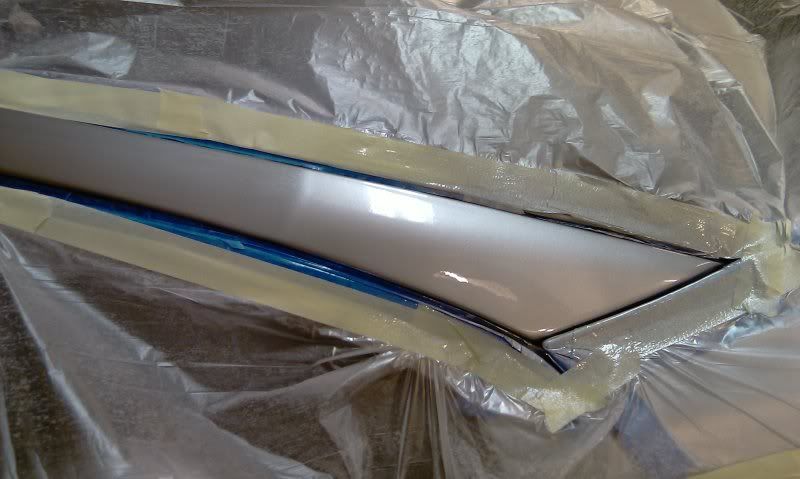 6. Now you can either just use another clear coat layer and cover the whole panel or use a blending clear coat as shown below to blend the new clear into the old clear. 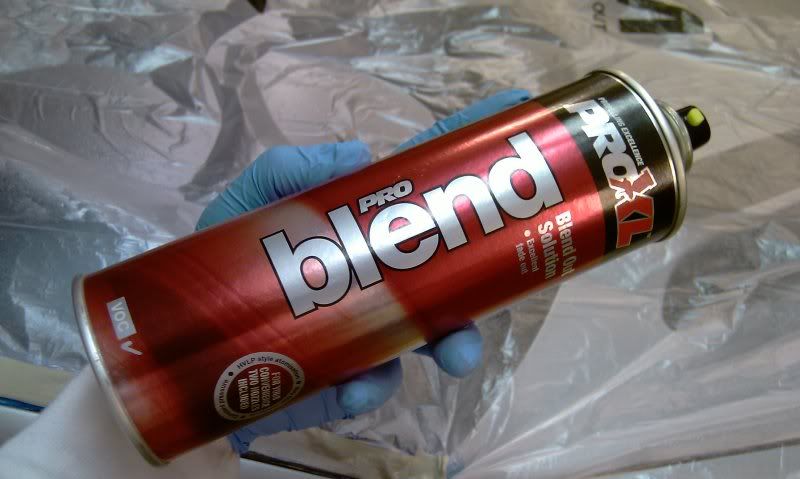 7. Clear coat blending agent used at edge of new clear and blending into old clear coat area. After clear coat hardens for 24 hours...compound and polish to complete the job 
|
 Jan 18, 2011 - 1:55 PM Jan 18, 2011 - 1:55 PM
|
|
|
Enthusiast Joined Jan 16, '10 From Sydney, Australia Currently Offline Reputation: 0 (0%) |
CelicaHD2... wow! Thanks so much for the awesome write-up, I couldn't have hoped for a better explanation.
I'll get started as soon as I can and I'll let you know how it all goes :-) |
 Jan 18, 2011 - 3:18 PM Jan 18, 2011 - 3:18 PM
|
|
|
Enthusiast  Joined Aug 15, '10 From UK Currently Offline Reputation: 0 (0%) |
Go for it don't be shy...
|
  |
2 User(s) are reading this topic (2 Guests and 0 Anonymous Users)
0 Members:
| Lo-Fi Version | Time is now: November 23rd, 2024 - 4:13 AM |



